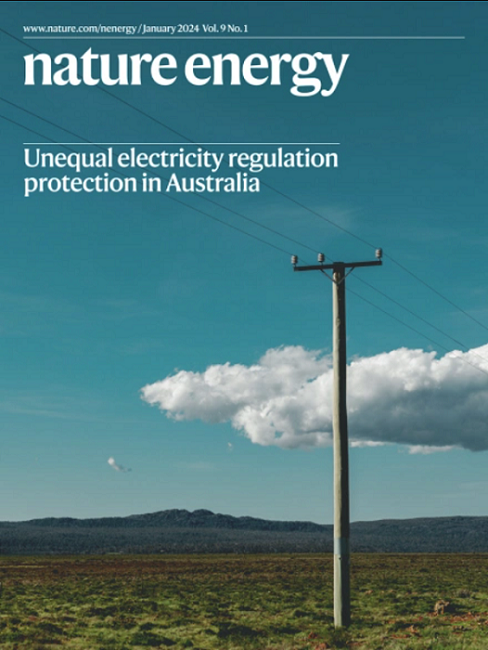Scaling and heating will drive low-temperature CO2 electrolysers to operate at higher temperatures
IF 60.1
1区 材料科学
Q1 ENERGY & FUELS
引用次数: 0
Abstract
Low-temperature carbon dioxide electrolysis (CO2E) provides a one-step means of converting CO2 into carbon-based fuels using electrical inputs at temperatures below 100 °C. Over the past decade, an abundance of work has been carried out at ambient temperature, and high CO2E rates and product selectivities have been achieved. With scaling of CO2E technologies underway, greater discourse surrounding heat management and the viable operating temperatures of larger systems is important. In this Perspective we argue that, owing to the energy inefficiency of electrolysers, heat generation in CO2E stacks will favour operating temperatures of between 40 and 70 °C, far from the ambient temperatures used so far. Such elevated temperatures put further pressure on catalyst and membrane stability and on the stack design. On the other hand, elevated temperatures could alleviate challenges in salt precipitation, water management and high cell voltages, aiding the technology. We reflect on these aspects and discuss the opportunities for waste heat valorization to increase the economic feasibility of the process. Low-temperature CO2 electrolysers are often tested at ambient temperature, yet this may not be optimal for larger-scale systems. In this Perspective Pelzer et al. argue that heat generation, due to the energy inefficiency of electrolysers, will favour elevated operating temperatures of 40–70 °C.


结垢和加热将驱动低温二氧化碳电解槽在更高的温度下运行
低温二氧化碳电解(CO2E)提供了一种在低于100°C的温度下使用电输入将二氧化碳转化为碳基燃料的一步方法。在过去的十年中,在环境温度下进行了大量的工作,并实现了高二氧化碳当量率和产品选择性。随着二氧化碳当量技术的规模化,围绕热管理和大型系统的可行工作温度的更多讨论非常重要。在这一观点中,我们认为,由于电解槽的能源效率低下,二氧化碳堆中的热量产生将有利于40至70°C之间的工作温度,与目前使用的环境温度相去甚远。如此高的温度给催化剂和膜的稳定性以及堆的设计带来了进一步的压力。另一方面,升高的温度可以缓解盐沉淀、水管理和高电池电压方面的挑战,有助于这项技术的发展。我们对这些方面进行了反思,并讨论了余热增值的机会,以提高该工艺的经济可行性。
本文章由计算机程序翻译,如有差异,请以英文原文为准。
求助全文
约1分钟内获得全文
求助全文
来源期刊

Nature Energy
Energy-Energy Engineering and Power Technology
CiteScore
75.10
自引率
1.10%
发文量
193
期刊介绍:
Nature Energy is a monthly, online-only journal committed to showcasing the most impactful research on energy, covering everything from its generation and distribution to the societal implications of energy technologies and policies.
With a focus on exploring all facets of the ongoing energy discourse, Nature Energy delves into topics such as energy generation, storage, distribution, management, and the societal impacts of energy technologies and policies. Emphasizing studies that push the boundaries of knowledge and contribute to the development of next-generation solutions, the journal serves as a platform for the exchange of ideas among stakeholders at the forefront of the energy sector.
Maintaining the hallmark standards of the Nature brand, Nature Energy boasts a dedicated team of professional editors, a rigorous peer-review process, meticulous copy-editing and production, rapid publication times, and editorial independence.
In addition to original research articles, Nature Energy also publishes a range of content types, including Comments, Perspectives, Reviews, News & Views, Features, and Correspondence, covering a diverse array of disciplines relevant to the field of energy.
 求助内容:
求助内容: 应助结果提醒方式:
应助结果提醒方式:


